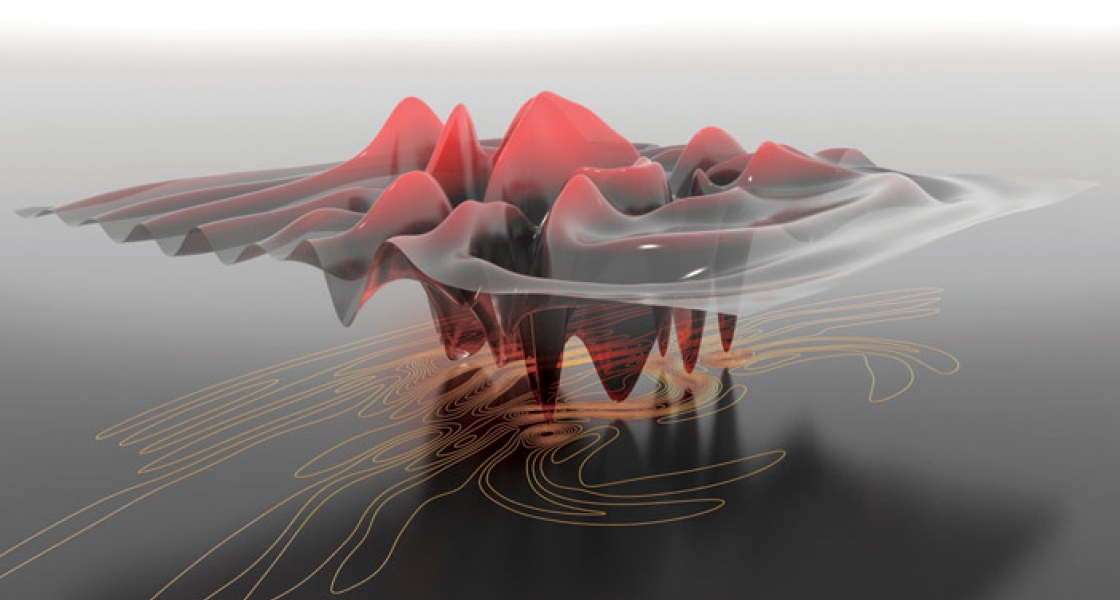Putting the brakes on a superfluid dipolar Bose-Einstein condensate (BEC) just got a whole lot more interesting. Last year, the Bohn theory group explored what would occur in a dipolar BEC when a laser probe — think of it like a finger — tickled a BEC just hard enough to excite a roton. (see JILA Light & Matter, Summer 2010).
The roton is a strange type of quasi particleformed when a number of strongly magnetic atoms or dipolar molecules come together and act like a different kind of particle. It is like a sound wave, with regions of high and low density. However, the relationship between its wavelength and frequency is decidedly strange. When a roton’s wavelength gets small enough, its frequency stops growing; in fact, it gets smaller.
The onset of this oddball phenomenon determines the appearance of ripples that are associated with the drag on a laser probe, or “finger,” as it traverses a dipolar BEC. But that’s not all that can happen, according to a new study by former JILA graduate student Chris Ticknor (now at Los Alamos National Laboratory), graduate student Ryan Wilson, and Fellow John Bohn. A sufficiently wide laser can also create vortices in the BEC, which are a lot easier to see in an experiment than a roton. There are other interesting experimental implications in the new study.
This work considers superfluid dipolar chromium atoms in a pancake-shaped trap created by two pairs of intersecting laser beams. This trap forces the dipolar atoms to line up side by side, and now they repel one another. The atoms can, however, be tilted slightly in one direction and this makes all the difference.
Under these circumstances, the rotons can be “fickle” when they’re tickled. A roton only appears when a laser finger wanders through the BEC perpendicular to the head-to-toe orientation of the atoms. If the laser travels through parallel to the orientation of the atoms, nothing happens — no laughter, no drag, no friction, no roton. Clearly, the aligned dipoles can suppress the roton, but only in one direction.
This direction-dependent result proves that an ultracold superfluid consisting of dipolar atoms or molecules isn’t necessarily uniform in all directions. This unexpected discovery was showcased in a recent article in Physical Review Letters. - Julie Phillips




